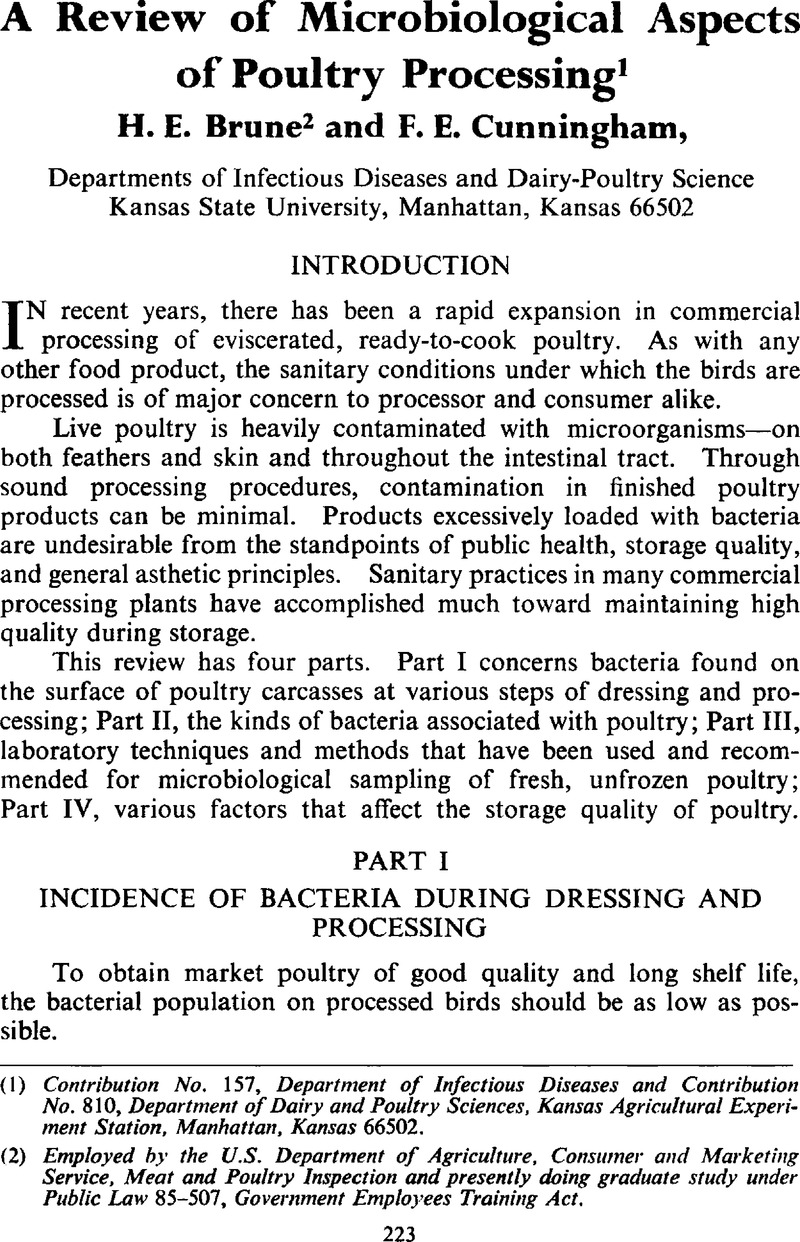Crossref Citations
This article has been cited by the following publications. This list is generated based on data provided by Crossref.
Patrick, Thomas E.
Goodwin, T. L.
Collins, J. A.
Wyche, R. C.
and
Love, B. E.
1972.
Steam Versus Hot-Water Scalding in Reducing Bacterial Loads on the Skin of Commercially Processed Poultry.
Applied Microbiology,
Vol. 23,
Issue. 4,
p.
796.
Maxcy, R.B.
Froning, G.W.
and
Hartung, T.E.
1973.
Microbial Quality of Ground Poultry Meat.
Poultry Science,
Vol. 52,
Issue. 2,
p.
486.
BRANT, A.W.
MULDER, R.W.A.W.
DORRESTEYN, L.W.J.
and
PELGROM, R.F.M.
1978.
A Review and Testing of Selective Media for Psychrotrophic Bacteria.
Poultry Science,
Vol. 57,
Issue. 5,
p.
1272.
CUNNINGHAM, F. E.
1979.
SHELF‐LIFE AND QUALITY CHARACTERISTICS OF POULTRY PARTS DIPPED IN POTASSIUM SORBATE.
Journal of Food Science,
Vol. 44,
Issue. 3,
p.
863.
TO, E.C.
and
ROBACH, M.C.
1980.
Potassium Sorbate Dip as a Method of Extending Shelf Life and Inhibiting the Growth of Salmonella and Staphylococcus aureus on Fresh, Whole Broilers.
Poultry Science,
Vol. 59,
Issue. 4,
p.
726.
CUNNINGHAM, F.E.
1981.
Microbiology of Poultry Parts Dipped in Potassium Sorbate ,.
Poultry Science,
Vol. 60,
Issue. 5,
p.
969.
Cunningham, F.E.
1987.
The Microbiology of Poultry Meat Products.
p.
29.
Bailey, J.S.
Thomson, J.E.
and
Cox, N.A.
1987.
The Microbiology of Poultry Meat Products.
p.
193.
Chipley, John R.
1987.
The Microbiology of Poultry Meat Products.
p.
43.
Al‐Mohizea, I. S.
Mashhadi, A. S.
Fawwal, A.
and
Al‐Shalhat, A.
1994.
Microbiological and shelf life assessment of chilled eviscerated whole chicken broilers in Saudi Arabia.
British Poultry Science,
Vol. 35,
Issue. 4,
p.
519.
Pilla, Suresh D.
and
Rickeb, Steven C.
1995.
Strategies to Accelerate the Applicability of Gene Amplification Protocols for Pathogen Detection in Meat and Meat Products.
Critical Reviews in Microbiology,
Vol. 21,
Issue. 4,
p.
239.
CLOUSER, C.S.
DOORES, S.
MAST, M.G.
and
KNABEL, S.J.
1995.
The Role of Defeathering in the Contamination of Turkey Skin by Salmonella species and Listeria monocytogenes.
Poultry Science,
Vol. 74,
Issue. 4,
p.
723.



